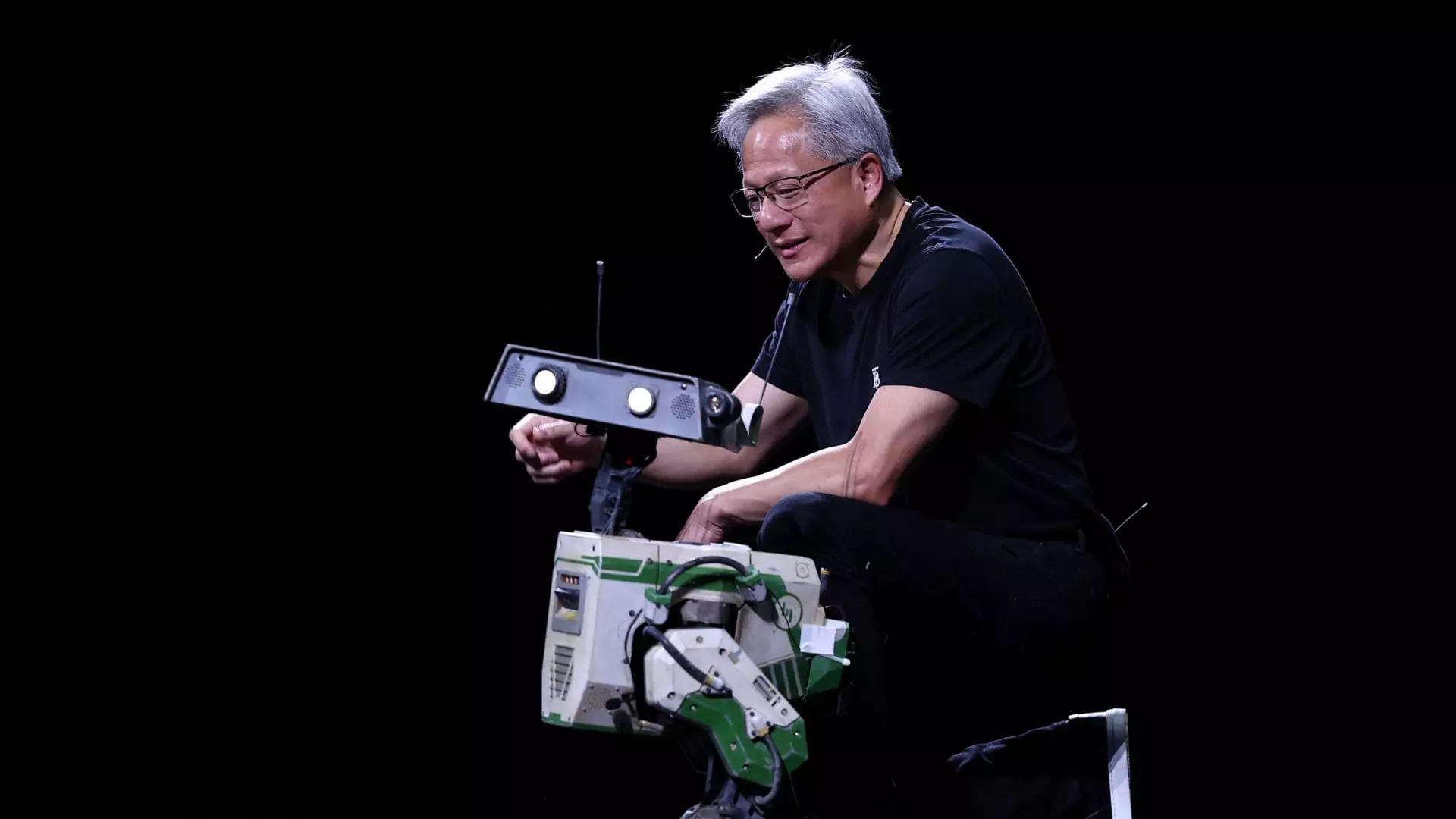Nvidia, under the visionary leadership of CEO Jensen Huang, is rapidly redefining its market position, revealing that robotics is vying for top billing alongside artificial intelligence (AI) as a major growth driver for the company. This paradigm shift marks a significant moment, as it underscores the potential of self-driving vehicles not only to serve as exceptional commercial applications but also as a crucial element in Nvidia’s expanding technological ecosystem. Huang’s assertion that both AI and robotics could represent multitrillion-dollar opportunities paints a compelling picture of the future—one dominated by intelligent machines that can enhance human capabilities across various domains.
Financial Power Revealed
The numbers emerging from Nvidia are staggering. The company’s transformation from a traditional chip manufacturer to a leader in AI and robotics is illustrated through its shifting revenue streams. Over the last twelve months, Nvidia’s sales surged from approximately $27 billion to an expected near $200 billion, indicating a robust demand for its cutting-edge data center GPUs. Huang noted that while the automotive and robotics sector currently accounts for only 1% of total revenue, growth was substantial—72% year-over-year. This might suggest that while robotics is still in its infancy stage within Nvidia’s portfolio, the future prospects are undeniably bright, with numerous untapped markets waiting to be explored.
Strategic Alignments and Market Consolidation
It is important to consider Nvidia’s recent strategic moves, particularly its effort to consolidate automotive and robotics under one reporting structure. This reorganization is not merely for bookkeeping; it symbolizes an integrated approach to building a cohesive ecosystem where AI and robotics can thrive together. As Huang elucidated, the implications of this strategy extend beyond mere sales figures—Nvidia is weaving a narrative in which AI technology is not just an accessory but rather a fundamental backbone that enables the functionality of autonomous vehicles and intelligent robots.
Moreover, Nvidia recently unveiled its Drive platform, a comprehensive suite designed specifically for the self-driving market, and also introduced AI models for humanoid robots under the moniker “Cosmos.” These moves present a case for Nvidia as a leader in the ever-growing autonomous space, underscoring the company’s commitment to not just being a chip provider but a critical player in shaping the future of transportation and automation.
An Evolving Identity
Huang’s declaration that Nvidia no longer thinks of itself solely as a “chip company” reflects a more profound transformation within the organization. This evolution towards being perceived as an “AI infrastructure” or “computing platform” provider underscores the importance the company places on creating an integrated ecosystem around its products. By expanding its offerings to include complementary technologies such as software, cloud services, and networking chips, Nvidia is positioning itself as a central player in the realm of AI development and deployment.
This holistic approach could potentially set Nvidia apart from competitors who remain anchored in traditional models of business. The embeddedness of its technologies in numerous applications—from autonomous vehicles to smart factories—highlights a deep-seated ambition to engineer a world rich in intelligent automation. Huang envisions a landscape peppered with billions of robots and hundreds of thousands of automated factories all powered by Nvidia technology, a future that can potentially recalibrate labor markets and enhance productivity like never before.
The Competitive Landscape and Market Implications
Despite its monumental success, Nvidia must navigate a complex and often volatile competitive landscape. The burgeoning interest in AI and robotics has attracted numerous players, many of whom are actively vying for market share. As Nvidia’s stock recently hit record highs, elevating its market capitalization to $3.75 trillion, the company is acutely aware that sustained growth will depend not only on its innovative capabilities but also on its ability to outmaneuver rivals in a rapidly evolving industry.
With shareholders recently approving executive compensation plans and reelecting board members, the emphasis is clearly on maintaining a strategic vision that aligns with shareholder expectations while pushing the boundaries of technological innovation. Nvidia’s trajectory will be monitored closely by investors and analysts alike, as the landscape for AI and robotics unfolds in what promises to be an exhilarating chapter in tech history.

